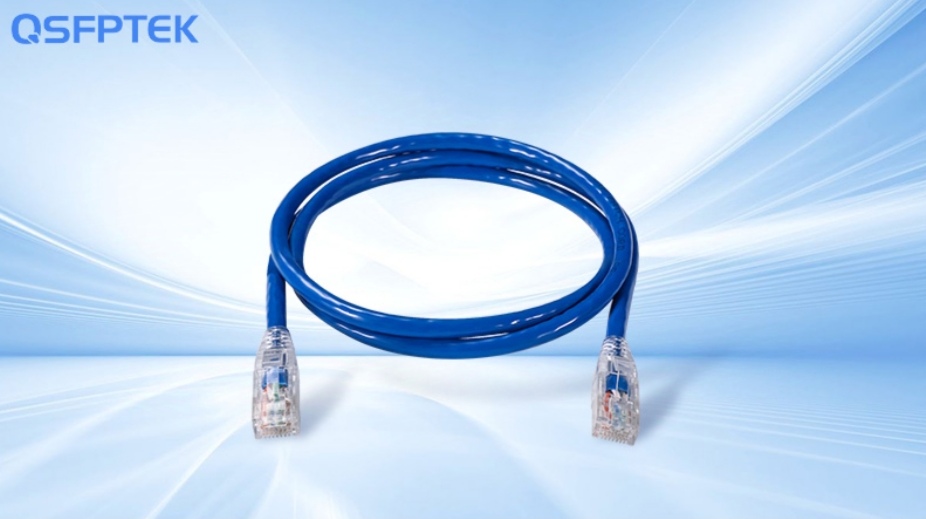The debut of Wi-Fi 7 has sparked much excitement, with promises of blazing-fast speeds, ultra-low latency, and seamless connectivity for countless devices. Such advancements make it tempting to believe that wired networking has reached the end of its relevance. In particular, Cat6 Ethernet cables, once the gold standard of stable connections, may appear outdated in an era dominated by cutting-edge wireless technology. Yet the question is not simply whether Wi-Fi 7 can replace Cat6, but whether both still have indispensable roles to play in modern networks.
What Makes Wi-Fi 7 Revolutionary
Wi-Fi 7, also known as IEEE 802.11be, marks a leap forward compared to Wi-Fi 6 and 6E. It introduces wider channels and advanced modulation techniques that push theoretical speeds up to 40 Gbps. Its Multi-Link Operation allows devices to connect across multiple frequency bands at the same time, reducing congestion and improving reliability. Latency is dramatically reduced, making wireless suitable for interactive applications like competitive gaming, cloud-based collaboration, and immersive AR or VR. Perhaps most importantly, Wi-Fi 7 is designed to handle an unprecedented number of devices simultaneously, solving one of the major challenges of earlier Wi-Fi standards. These capabilities give wireless networking a sense of freedom and performance that was once exclusive to wired solutions.
The Enduring Role of Cat6 Ethernet
Cat6 Ethernet cables, though far older, remain an integral part of network infrastructure. Standardized in the early 2000s, Cat6 supports speeds of 1 Gbps for distances up to 100 meters and can handle 10 Gbps on shorter runs. Its twisted-pair copper construction offers improved resistance to crosstalk and interference, ensuring that data transmission is steady and reliable. While categories such as Cat6a and Cat7 promise even higher capabilities, Cat6 remains widely deployed because it strikes an effective balance between affordability and performance. For many households and businesses, Cat6 represents the sweet spot of wired networking: fast enough to support modern demands, cost-effective to implement, and durable for long-term use.
Comparing Wi-Fi 7 and Cat6 Ethernet
Speed and Real-World Performance
On paper, Wi-Fi 7’s potential speeds appear to eclipse Cat6 entirely. However, wireless networks rarely achieve their maximum theoretical rates. Factors such as walls, interference from other devices, and distance from the router can all reduce performance. A Cat6 cable, while limited to lower maximum speeds, consistently delivers close to its rated capacity without fluctuation. For applications like streaming ultra-high-definition video or transferring large files to a local server, that stability can matter far more than the highest possible peak speed.
Stability and Reliability
Wireless has always been convenient, but it is also susceptible to environmental conditions. Even with the improvements of Wi-Fi 7, a nearby microwave, overlapping networks, or simply the layout of a building can compromise performance. Cat6 Ethernet is immune to these issues. Once plugged in, it provides an uninterrupted pathway that ensures performance remains unaffected by outside interference. In settings where dependable connectivity is crucial, this reliability cannot be overlooked.
Latency and Responsiveness
Wi-Fi 7 is designed to minimize latency, and in many cases, it succeeds impressively. Yet for real-time applications where fractions of a second matter, Ethernet still holds an edge. Competitive gamers, professionals hosting critical video conferences, or organizations executing financial trades all benefit from Cat6’s guarantee of near-instantaneous communication. Wireless may come close, but wired remains the benchmark for responsiveness.
Choosing Between Wi-Fi 7 and Cat6
In Home Networks
Wi-Fi 7 will transform household connectivity by giving smartphones, tablets, and smart home devices the freedom of fast and flexible access. Yet for stationary equipment such as desktop PCs, gaming consoles, or smart televisions, a Cat6 cable often proves more practical. It eliminates concerns about dead zones or fluctuating bandwidth, ensuring a seamless experience for bandwidth-intensive tasks such as streaming 8K video or running backups to a home NAS.
In Business Environments
Offices benefit enormously from the flexibility that Wi-Fi 7 provides, allowing employees to remain productive without being tied to a desk. However, enterprises cannot rely on wireless alone. Servers, workstations, and security systems still depend on Ethernet connections to guarantee uptime and secure transmission. Cat6 cables provide the assurance that vital business operations will not be interrupted by unpredictable wireless conditions.
For Gamers and Professionals
Those who demand absolute performance will find Cat6 indispensable. While Wi-Fi 7 narrows the gap, the unpredictability of wireless is a risk that gamers and professionals cannot afford. For competitive play, creative work, or data-intensive projects, the certainty of wired Ethernet offers peace of mind and an advantage that Wi-Fi cannot fully replicate.
Do You Still Need Cat6 Ethernet Cables?
Rather than asking whether Cat6 is obsolete, it is more accurate to see wired and wireless technologies as complementary. Wi-Fi 7 provides unmatched convenience and mobility, but Cat6 ensures consistency, reliability, and stability in ways that wireless still cannot. Together, they form a hybrid network that leverages the strengths of both. In practice, Wi-Fi 7 is best for portable devices and casual use, while Cat6 continues to anchor the most demanding tasks.
Conclusion
Wi-Fi 7 undoubtedly represents the future of wireless networking, with its remarkable speed, efficiency, and device-handling capabilities. Yet Cat6 Ethernet cables continue to play a vital role, offering guaranteed performance where stability and security are paramount. Far from being replaced, Ethernet remains the foundation of networks that demand reliability. The strongest setups of tomorrow will not rely on one or the other but will blend Wi-Fi 7’s flexibility with Cat6’s dependability. So even in the age of next-generation wireless, keeping those Ethernet cables close at hand is still a wise decision.



